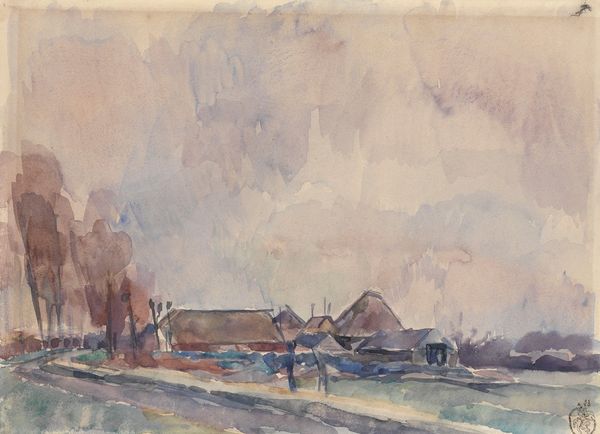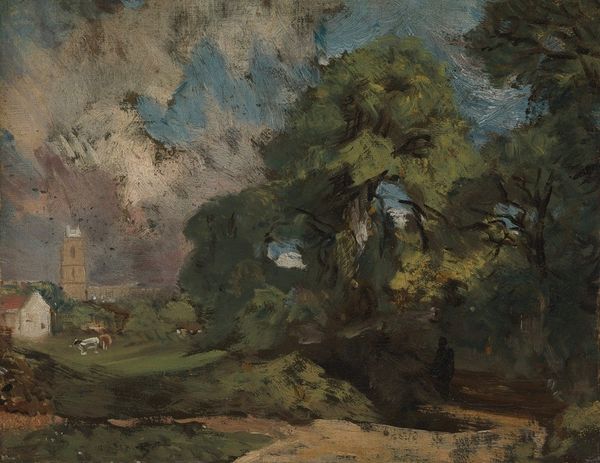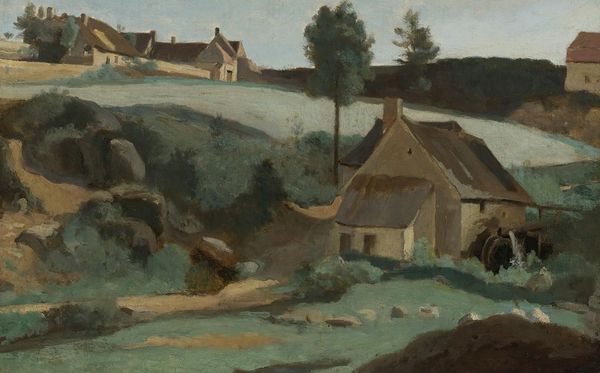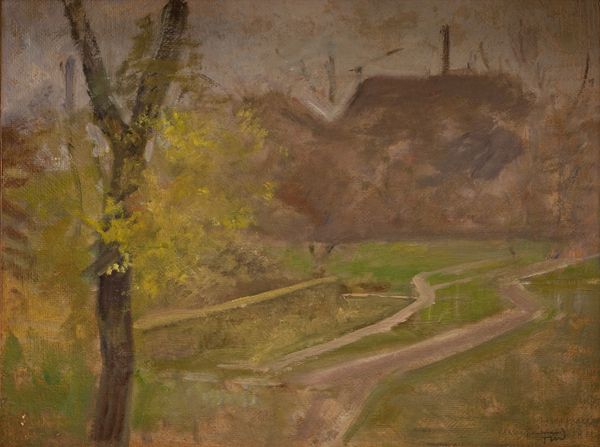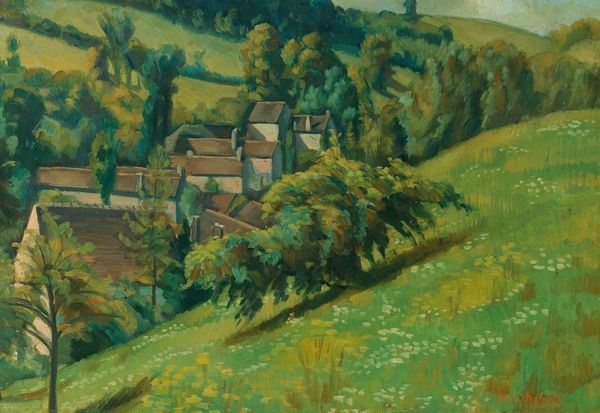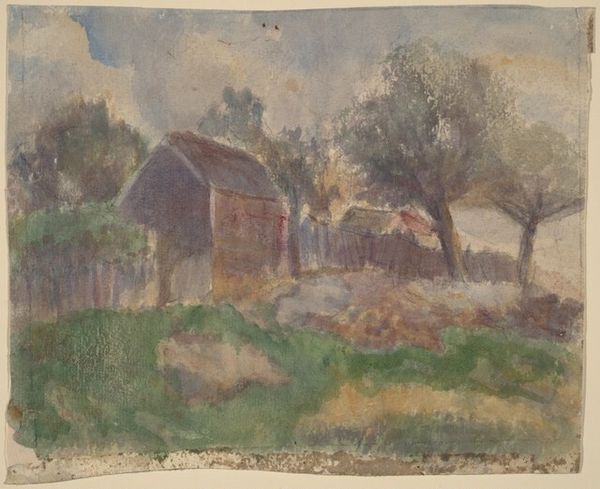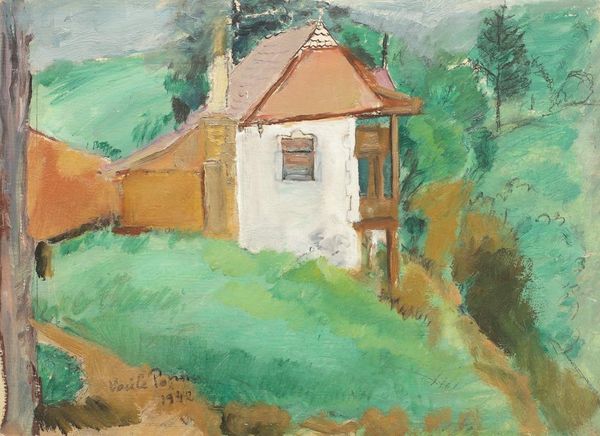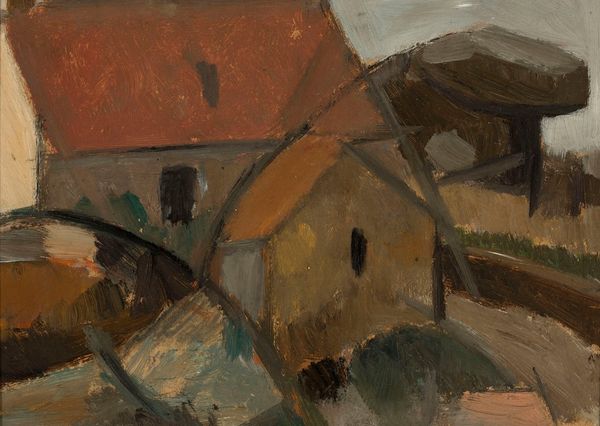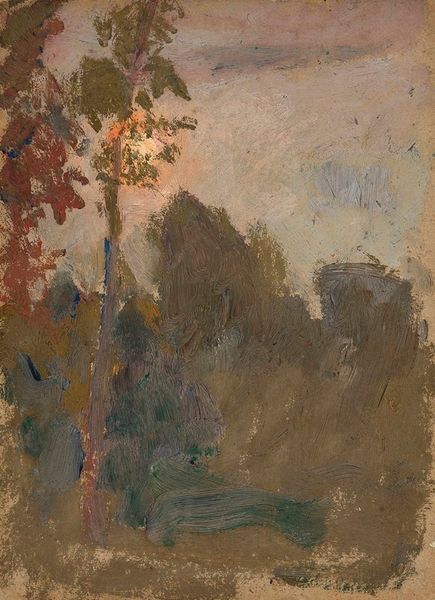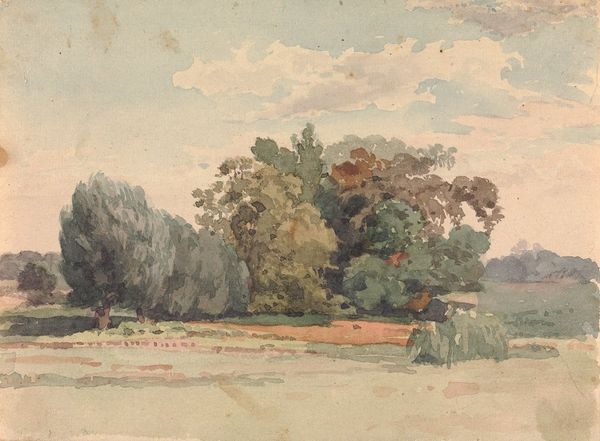
Copyright: Public Domain: Artvee
Curator: We're looking at \u013dudov\u00edt \u010cord\u00e1k's "By the Water," a work likely completed between 1920 and 1925. Editor: It strikes me immediately as muted, restful, almost dreamlike. The colors are soft, predominantly earthy tones, and the forms seem gently blurred. Curator: Indeed, the artist’s choice of watercolor aligns with this Post-Impressionist painting style. The era saw art increasingly used to reflect subjective emotions and the modern experience. Think about how industrialization and urbanization were changing daily life and one might expect people were longing for the slower pace depicted here. Editor: And there's a quiet domesticity present in the architecture and the figures resting near the water's edge, which brings up some interesting points about material needs and labor of leisure, and how certain types of leisure become fetishized across history. Were the people near the river workers taking a pause or those for whom this slower pace of life was permanently available? Curator: Precisely, thinking through those elements in conjunction with a Post-Impressionist lens gives us a deeper insight into the narratives this piece subtly evokes about class and labor. Considering also that watercolor allowed \u010cord\u00e1k to engage the “en plein air” method gives way for further intersectional interpretations about gender in art creation. This connects the work to contemporary debates around materiality. Editor: "En plein air" gives it this sense of immediacy, as though capturing a fleeting moment, despite the deeper societal structures implicitly on display. Watercolors allowed many artists easier access, and it’s a testament to \u010cord\u00e1k's ability to construct a view with an acute sensitivity. The surface appears textured, almost aged, enhancing the feeling of history. Curator: It encourages a conversation, doesn't it, about the romanticism often attached to landscape art? Looking closer at what is depicted, its composition, and how that engages in cultural identity, one can really start unpacking broader discussions of place and identity. Editor: Ultimately, for me, the appeal lies in its understated quality, how much is left unsaid but somehow communicated through those brushstrokes and subtle hues. It is what speaks most. Curator: I think that speaks to the enduring relevance of understanding both the artist's method, and what the work suggests. By viewing artwork, it gives viewers opportunities to reflect on intersectional dialogues.
Comments
No comments
Be the first to comment and join the conversation on the ultimate creative platform.

